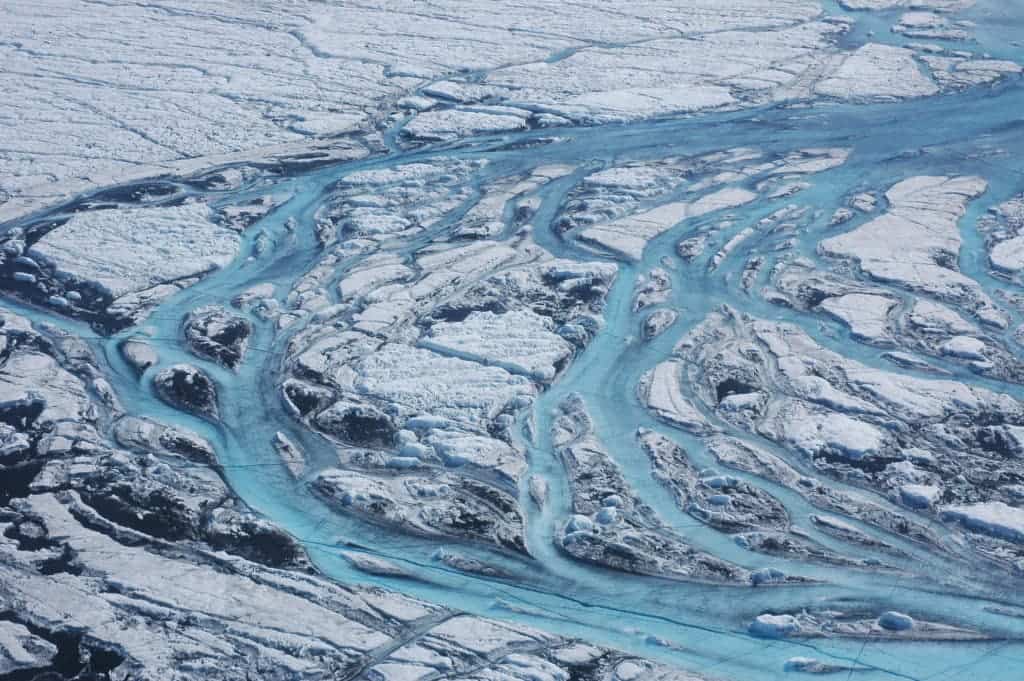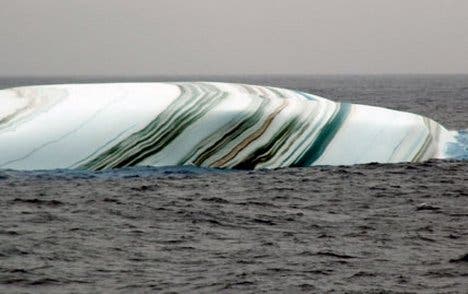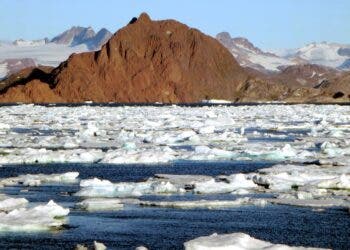
Greenland’s ice sheet is melting faster than at any point in the last four centuries, researchers warn in a new study. The findings are especially worrisome since Greenland’s ice sheet — which is 1.5-kilometer thick and covers 1,710,000 square kilometers — could raise sea levels by up to seven meters if it completely vanished. “From a historical perspective, today’s melt rates are off the charts, and this study provides the evidence to prove this,” said Sarah Das, a glaciologist at Woods Hole Oceanographic Institution (WHOI) and co-author of the study.
A history trapped in ice
Scientists had known that Greenland’s massive ice sheet is melting at an accelerated rate, based on satellite observations. But the question on everybody’s mind has always been how fast. And because reliable satellite monitoring of the area only dates back to the early 1990s, it’s also challenging to gauge exceptional warming events from background warming rates. For instance, 2012 was particularly intense, with 97% of the entire ice sheet experiencing surface melting for a few days.
In a new study, an international team of researchers found that while 2012 was indeed unusually warm for Greenland, the ice sheet’s dramatic warming may simply be a preview of what’s in store for the future. Their unprecedented analysis, which offers a melting record going back centuries, shows that the ice sheet has been melting at a faster rate than previous estimated, even faster than air temperatures are increasing.
“Melting of the Greenland Ice Sheet has gone into overdrive. As a result, Greenland melt is adding to sea level more than any time during the last three and a half centuries, if not thousands of years,” said Luke Trusel, a glaciologist at Rowan University’s School of Earth & Environment and former post-doctoral scholar at Woods Hole Oceanographic Institution, and lead author of the study. “And increasing melt began around the same time as we started altering the atmosphere in the mid-1800s,” said the researcher, alluding to a human activity as the likely culprit for this warming.
In order to come up with a historical record of Greenland’s ice melt, the research team drilled ice cores from the ice sheet at sites more than 1,800 meters above sea level. Researchers drilled at such high elevations for good reason. Greenland experiences seasonal melt during the warm summer days, and at low elevations, the melting is more intense. At such locations, meltwater runs off the ice sheet and into the ocean, contributing to sea level rise — but in the process, no record of the melt remains. Contrary, at higher elevations, the meltwater quickly refreezes due to contact with the snowpack underneath. Instead of escaping the ice sheet, the short-lived meltwater forms icy bands that stack up layers of densely packed ice over time. In the case of the cores drilled by the researchers, the record goes back into the 17th century.
Traffic-pole-sized ice cores were sent to labs in the United States where their physical and chemical properties were assessed. Dark bands running horizontally across the cores record the strength of the melting for a given year. Thicker bands signify years of higher melting, while thinner bands indicate years of less intense melting.
The results from the ice cores were combined with observations from satellites and climate models. The researchers claim that the thickness of the annual melt layers can also track how much melting was occurring at different sites, at the lower-elevations edges of the ice sheet. In other words, their new findings cover melting broadly, across the much of the ice sheet.
Writing in the journal Nature, the authors conclude that runoff in Greenland started to steadily rise when the first signs of climate change hit the Arctic, in the mid-19th century. However, it accelerated dramatically in the past 20 years, at a rate six-fold higher than before the Industrial Revolution.
“We have had a sense that there’s been a great deal of melting in recent decades, but we previously had no basis for comparison with melt rates going further back in time,” Matt Osman, co-author of the new study, said in a statement. “By sampling ice, we were able to extend the satellite data by a factor of 10 and get a clearer picture of just how extremely unusual melting has been in recent decades compared to the past.”
The authors also note that Greenland’s ice sheet is much more vulnerable to melting than before. Data suggests that even small changes in temperature caused exponential increases in melting in recent years — a non-linear response that points to feedback effects. Since surface temperatures in the Arctic are rising faster than any other place on Earth, these findings don’t bode well for the future of Greenland’s ice sheet — and with it, our own.






